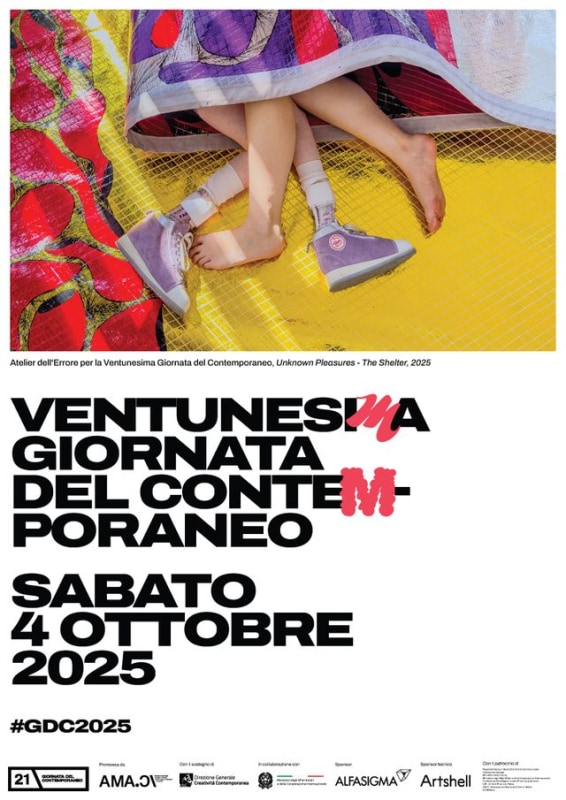On October 4th, the UniCredit Art Collection opened the doors of Palazzo Magnani, joining the 21st Contemporary Art Day promoted by AMACI.
The exhibition, titled Contemporary at Play, explores how contemporary art plays with the rules of perception, altering weights, measures, and materials to generate new interpretations. Through the tension between form and meaning, each artist deciphers reality through the lens of the present, creating visions that invite viewers to reflect on the transience of time and the hidden poetry of everyday life.
Michael Johansson (Days and Names, 2010) focuses on the irregularities of daily life, not as exceptional events but as expressions of an exaggerated routine. Folders, binders, and even an old slide projector are compacted into a puzzle-like structure that cancels their functional purpose and elevates their symbolic value, overturning perspective. Similarly, Raša Todosijević (The Sculpture, 2002) arranges over one hundred teapots filled with cement on the floor. The domestic object, fragile in appearance yet heavy in substance, is decontextualized to highlight the ambiguity between form and content. Each teapot, unique in its shape, becomes a voice of context, a memory of origin, a fragment of plurality evoked through recovery.
The playful dimension of the creative act also emerges in the use of simple materials such as paper and colors, which become vehicles for new expressive forms. With Svernare (2011), Derek Di Fabio presents a vibrant and mutable work, a visual organism that transforms depending on the gaze, inviting the viewer to an imaginative and free immersion.
Carlos Garaicoa (From the series Lo viejo y lo nuevo (XX), 2010) stages the contrast between utopia and reality, imagination and concreteness, through his intricate paper cuttings. Paper, a humble and everyday material, is elevated to art thanks to the artist’s vision and craftsmanship. Likewise, Francesco Clemente’s pastels (The Pondicherry Pastels, 1980–1986) transport us to a familiar and playful universe, evoking the collections of drawings we have all created at least once.
Finally, irony takes center stage in Silvia Ruata’s work (Domitilla; Biscotto; Pantone; series "Animali da passeggio", 2007), where the simple act of walking a pet becomes a critical reflection on the relationship of use and abuse that humans have established with nature.
In all these works, play is not mere entertainment: it becomes a powerful tool capable of subverting visual codes, deconstructing established meanings, and generating new narratives. Through play, the artist questions conventions, challenges the functional logic of objects, and opens unexpected interpretative paths. The playful gesture thus transforms into a critical act, a creative tension that interrogates reality and reveals its contradictions.
Creativity and imagination are vital and transformative forces, capable of deeply enriching every individual’s life.


